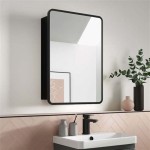How to Mirror iPhone to Mac
Mirroring an iPhone screen to a Mac provides a larger display for various activities, from presenting content to enjoying media. Several methods accommodate this need, each with its own advantages and limitations. This article outlines the most common and reliable mirroring options available.
Using QuickTime Player
QuickTime Player, a pre-installed application on macOS, offers a straightforward wired mirroring solution. This method delivers high-quality mirroring with minimal latency, making it suitable for tasks requiring precision and responsiveness.
The steps involved are:
- Connect the iPhone to the Mac using a Lightning to USB cable.
- Open QuickTime Player on the Mac.
- From the File menu, select "New Movie Recording."
- Next to the record button, click the dropdown arrow.
- Select the connected iPhone as both the camera and microphone source.
- The iPhone's screen will then be mirrored on the Mac.
Utilizing AirPlay to a Compatible Mac
AirPlay facilitates wireless mirroring to compatible Macs. This method offers greater freedom of movement compared to wired solutions, particularly beneficial for presentations and demonstrations. However, performance can be influenced by network conditions.
Requirements for AirPlay mirroring include:
- An iPhone running iOS 15 or later.
- A Mac model introduced in 2018 or later running macOS Monterey or later.
- Both devices connected to the same Wi-Fi network.
To mirror using AirPlay:
- Open Control Center on the iPhone.
- Tap "Screen Mirroring."
- Select the name of the Mac from the list of available devices.
- The iPhone's screen will then be mirrored wirelessly to the Mac.
Mirroring with Third-Party Applications
Various third-party applications offer additional mirroring capabilities, often including features like recording, enhanced performance options, and device management tools. While some are free, others offer premium features through subscriptions or one-time purchases.
Key considerations when choosing a third-party app:
- Compatibility with the iPhone and Mac operating systems.
- Features offered, including recording, resolution options, and performance enhancements.
- User reviews and ratings to assess reliability and usability.
- Pricing models and whether free trials are available.
Installation and usage instructions typically vary depending on the chosen application. Consulting the app's documentation provides specific guidance.
Troubleshooting Common Mirroring Issues
Occasional issues might arise during screen mirroring. Addressing these often involves basic troubleshooting steps.
Common issues and potential solutions:
- No Connection: Ensure both devices are on the same Wi-Fi network (for AirPlay) or that the USB cable is securely connected (for wired mirroring).
- Lag or Poor Performance: Try closing unnecessary applications on both devices or moving closer to the Wi-Fi router (for AirPlay).
- Black Screen: Check that the iPhone's screen is unlocked and active. Restarting either device can also resolve this issue.
- Audio Issues: Verify the audio output selection on the Mac. Ensure the volume is not muted on either device.
Optimizing Mirroring Performance
Several steps can optimize the screen mirroring experience, particularly for wireless connections.
Performance optimization tips:
- Close unnecessary applications on both the iPhone and the Mac.
- Ensure a strong and stable Wi-Fi connection by minimizing interference and optimizing router placement.
- Reduce the screen brightness on the iPhone to conserve battery and potentially improve performance.
- Update both the iPhone and Mac operating systems to the latest versions to benefit from performance improvements and bug fixes.
Choosing the Right Mirroring Method
Selecting the optimal mirroring method depends on the specific requirements.
Method selection considerations:
- Latency requirements: Wired mirroring via QuickTime offers the lowest latency.
- Mobility needs: AirPlay provides wireless freedom.
- Additional features: Third-party apps often provide recording and other advanced functionalities.
- Mac compatibility: Ensure the chosen method is compatible with the Mac model and macOS version.
By understanding the nuances of each method, users can select the most effective approach for their mirroring needs.

How To Mirror Iphone Display Macbook Ios 12 Macos Mojave

2024 Updated How To Mirror Iphone Mac With 5 Methods

5 Easy Steps To Mirror Iphone Mac Istreamer

Three Ways To Mirror Iphone Mac Easily Successfully

2024 Updated How To Mirror Iphone Mac With 5 Methods

2024 How To Mirror Iphone Display Mac Ios 14 And Big Sur
How To Mirror Your Iphone Screen A Macbook

How To Mirror Iphone Screen On Mac Ios Er

How To Mirror Iphone Mac 8 Methods

How To Mirror Iphone Windows Pc Laptop Mac Full Guide








